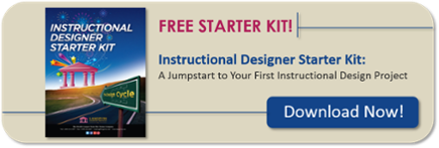Photo by: Martin Damboldt via Pexels
According to The Center for Generational Kinetics, the current workforce may include four to five generations depending on the specific workplace. Research suggests that each generation brings with them a specific set of values, ideas, and learning preferences. Here are the birth years for each generation according to Pew Research Center:
- Generation Z: Born 1997 to 2012
- Generation Y or Millennials: Born 1981 to 1996
- Generation X: Born 1965 to 1980
- Boomers: Born 1946 to 1964
- Silent: Born 1928 to 1945
Intergenerational learning has become a huge consideration in the training industry for instructional designers and course leaders. It comes up frequently as a “hot topic” in many of our courses, with folks from each generation asking how to deal with the other.
The following are a few suggestions to support the commonalities between generations and demystify the challenges:
1. Don’t Make Assumptions
It’s easy to place each generation in a box. For example, research suggests Millennials are driven by technology and Boomers prefer paper-based data. While there may be some truth to this, there are always exceptions. We’ve interacted with Boomers who are very tech savvy, and Millennials and Gen Xers who have very little interest in technology. So, keep an open mind regarding your learners—they may surprise you!
2. Relevance
When designing courses, address the adult learner’s reality at work. Explain how gaining new knowledge and skills will benefit them and how they can apply these new skills on the job. This adult learning principle is valid across all generations.
3. Performance-Based
Training should be designed with a strong focus on learner practice. Regardless of generation, no one wants to sit through an eight-hour “data dump.” We learn by doing! All adult learners value hands-on application. And, while this is common sense, it’s not always common practice!
4. Variety
The key to engaging any group of learners is to select a variety of instructional methods, and this applies to multi-generational learners, too. It’s important to select presentation and application methods that appeal to all learning preferences: visual, auditory, and kinesthetic. It’s also essential to consider a variety of training strategies by employing a blended learning approach. Using a blend of traditional and e-learning strategies will bridge any generational divide.
5. Analyze Your Learners
As instructional designers and professional trainers, it’s important to know your audience! During the course design process, you’ll want to conduct a thorough learner analysis to better understand your target audience. If you can’t do a full analysis as part of your initial design process, do a quick mental analysis at the start of your course. Cultivating this strategy will help you make adjustments during the delivery of your program.
These suggestions are not magical, but they are rooted in the best practices of instructional design. Incorporating them into your training sessions will help you bridge any generation gaps you might encounter.
Check out our How Adults Learn workshop for more tips and techniques on connecting with your audience. All generations are welcome!

